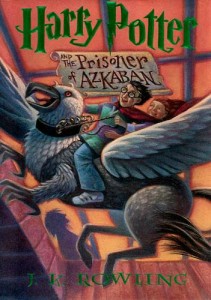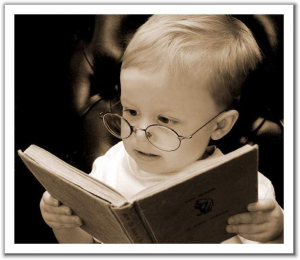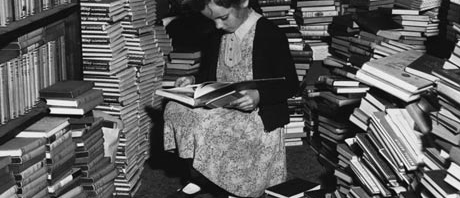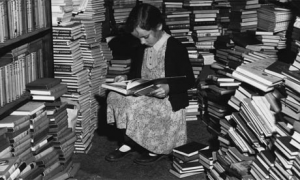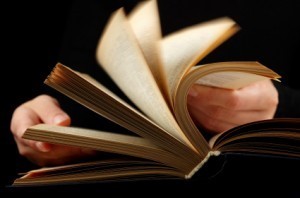Looking through my bookshelf is effectively viewing a timeline of my life thus far as a reader. Some of the “chapter books” I began savoring as a first grader sit, collecting dust, not reread since I discovered Harry Potter. Then there is, of course, the Harry Potter series, all seven books, the companion books written by JK Rowling, and an extra copy of the third one, because it was my favorite book for at least five years. There are Babysitters Club novels, Agatha Christie mysteries, and Lee Child thrillers. Among the middle and high school-assigned readings are the ones I read the obligatory time, if even that, and the ones that became instant favorites on my shelf. The ones that I loved but haven’t touched since and the ones with pages falling out from use. Two books have severe water damage—a young adult novel that a friend borrowed and then returned after dropping it in the bathtub, and one that I’ve cried while reading so many times over the years that it may as well also been plunged into a full body of water.
Dedicated readers have a few books on the shelf that they just know: exact scenes, chapters, pages, even lines that have stuck with them for years. They can select a familiar spine, feel its familiar weight in their hand, and flip almost effortlessly to their pages of choice. Rereading may be a guilty pleasure of sorts, but it also offers a lot of novelty and value. Just ask any English teacher.
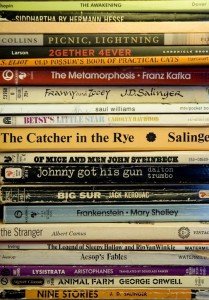 My parents used to hate that I reread books. They wanted for me to keep expanding my library and literary education. I distinctly remember being “caught” rereading a book and receiving a bizarre chastisement from my mother. She argued that there was no merit, no growth, from reading a book more than once. Fast forward to high school English classes, where standard procedure involves reading a book twice, annotating, highlighting, bookmarking key passages, skimming notes for themes and motifs, and close reading certain pages.
My parents used to hate that I reread books. They wanted for me to keep expanding my library and literary education. I distinctly remember being “caught” rereading a book and receiving a bizarre chastisement from my mother. She argued that there was no merit, no growth, from reading a book more than once. Fast forward to high school English classes, where standard procedure involves reading a book twice, annotating, highlighting, bookmarking key passages, skimming notes for themes and motifs, and close reading certain pages.
Clearly, this exhibits that there is value in rereading; it is simply not expected that someone will glean all the information a book has to offer from just one go through. An article published on bustle.com illustrates a similar mindset to mine—the author is in love with second and third and tenth readings of her favorite books, and with a mother who simply “can’t” do it. She links to a bbc.com article that deems rereading a “guilty pleasure” and a “security blanket.” Revisiting a childhood library probably corresponds more with this idea. You probably will not discover a profound literary statement reading From the Mixed-Up Files of Mrs. Basil E. Frankweiler. Rereading a novel assigned in middle or high school though, with added years and a broader vocabulary and just a different perspective, can totally change a person’s perceptions of a book. In some ways, rereading a book is also more challenging because the surprise and novelty is gone. While a second read offers the comfort of familiarity, it also grants the reader a chance, even a dare, to look further and think more deeply.
I have read each of my favorite books time and time again, with new interpretations and observations and life experiences coloring the way they are read. Just like children like to hear their favorite bedtime stories, I will always love flipping through Harry Potter and the Prisoner of Azkaban. The plot, the characters, and the magical setting are of course, captivating for young readers, but only in a more mature rereading do themes and motifs, even hidden meanings, begin to surface. For example, Prisoner of Azkaban draws strongly on themes of innocence and justice among many different plot lines. It is also wrought with symbolism in character names and animals. Until the book is experienced through the lens of a reader who knows to think more deeply and critically, it’s just about a bunch of kids on brooms and an escaped murderer. Just like a film enjoyed by people of all ages, or a work of abstract art, many of the more intricate nuances go unnoticed by a young or unfamiliar viewer. A second impression reveals a deeper look, guided by the knowledge that comes from age and learned approaches to viewing and reading. Would you debate the merits of listening to a piece of music more than once, or seeing a famous Van Gogh more than once? Would anyone question the merits of rereading, say, the Bible?
Revisiting a piece of writing certainly provides a different experience then the first read-through and creates an exciting mix of familiarity and new discoveries. So the question is, how many times have you read your favorite?
— Emily Danzig

